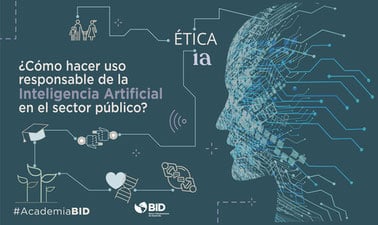Pilot
Centralized Digital Admission in Pernambuco
.

The public education network of the subnational government of Pernambuco, Brazil, needed to centralize and automate the enrollment process and improve the student allocation to educational institutions, solving the problem of enrollment imbalance (e.g., congestion or underutilized infrastructure) and improving the matching between families and schools. The pilot test took place in the Regional Education Management 'Agreste Centro-Norte' in 16 municipalities in Caruaru, ahead of the start of classes for the 2021 school regime.
Problem to be solved
Pernambuco's enrollment process divided students by their networks of origin: most of them are elementary students from the municipal networks advancing to high school in the state network, students from a school not offering the following grades, transfers, and freshmen. More than centralizing, the process required automation as some of the entries were partly manual (from the municipal networks). School directors filled in some remaining vacancies at their own discretion and in person after the official deadlines. Aside from the technical problems, some families felt aggrieved because they could not enroll in the most congested schools. Students' preferences were collected but few were allocated to the institution of their choice. Also, some of the admissions were given on a first-come, first-served basis, giving a critical role to asymmetries of information and time availability.
Populations affected by the problem
In Brazil, federative entities have diverse responsibilities. Subnational governments (states) are primarily responsible for high school and jointly and severally for the final years of elementary school. There are more than 500k students in the Pernambuco network, but in Caruaru, there were 40k students in 2020. It has been estimated that 14k students could use the platform because, although many could transfer from one school to another, most users would be in the first year of high school (or 6th grade). After the pilot, we have reported almost 11.5k users.
The current response to this problem, considering the related institutions
The current responses are decentralized processes for each type of student's home network, unsynchronized and with stages dependent on the previous ones. Therefore, some students have privileges and a higher probability of being matched with the vacancy of their choice.
Proposal to solve the problem using AI
The proposal includes the design, implementation, and evaluation of an online platform to allocate students to educational institutions in a centralized manner. The platform will provide information on the available educational offer, and families will select their preferences from a prioritized list. Allocation will use an algorithm that operates under some prioritization criteria defined by the authority, randomly allocating vacancies if the demand exceeds the supply. The platform will incorporate some AI functionalities. For example, the platform could warn applicant families about potential congestion in certain schools based or recommend schools for socially disadvantaged students.
What security considerations, national laws, or standards should be considered to use each source of information?
The General Law for the Protection of Personal Data (Ley General de Protección de Datos Personales, LGPD) has been enacted in Brazil and the project is fully compliant with its provisions: local servers in Brazil, data cryptography and data maintenance process, secrecy, and discarding of data. The Data Security team of the Education Secretariat has requested Some additional considerations on the matter.
Progress/results to March 2022
In the first pilot in 2021, 11.5k students accessed the platform, and 9.5k completed applications (most of those who have not completed had only one school available in the municipality). Of those who have completed, 80.3% were allocated to their school of choice, 8.2% to their second choice, and 2.1% to the third. Eight percent were allocated by distance, while 1.8% were initially left out until the Secretariat can open more vacancies.
Goals for 2022-II
Based on the experience in the region, efforts have been made to scale the policy to other Brazilian regions. In particular, work has begun on implementing a centralized student admissions system in Recife, Brazil. This new pilot will provide an efficient and equitable system for the most vulnerable students to improve their academic experience.
Main implementation challenges
The pandemic and social distancing have been the main challenges for the implementation of the project. The cultural change from a passive attitude to an autonomous role of most families in a period without internal communication in the educational units has been a difficult issue. The population also had problems with the digital process and the low adhesion of small municipalities. Internally, there was a need for a larger IDB team and a higher profile by the Secretariat team. The roles and responsibilities of the stakeholders were not clear because the project did not have a specific formal document signed by all.
Main AI challenges identified
The main challenge was the coordination of the requests with developers without being able to manage the team. In addition, the hiring of a foreign team unaware of the Brazilian reality was a much bigger challenge than the simple translation. A lot of time was lost to understand the demands. Also, the lack of the Dashboard for applications management by the Secretariat, problems with the operation of the application platform, problems with the allocation, and lack of information sent to the families were additional challenges of the platform.
Hub
Sector
Education
Location
Pernambuco, Brasil
Executing Entity
State
Use and Monitoring
Contact
It may interest you
Este MOOC aborda los conceptos, principios, desafíos y oportunidades del uso ético y responsable de la inteligencia artificial (IA) para el sector público.
Colombia lanzó la Misión de Expertos en IA para evaluar las potencialidades de la IA y dar recomendaciones concretas en el corto, mediano y largo plazo.
Responsible and Widespread Adoption of Artificial Intelligence in Latin America and the Caribbean



